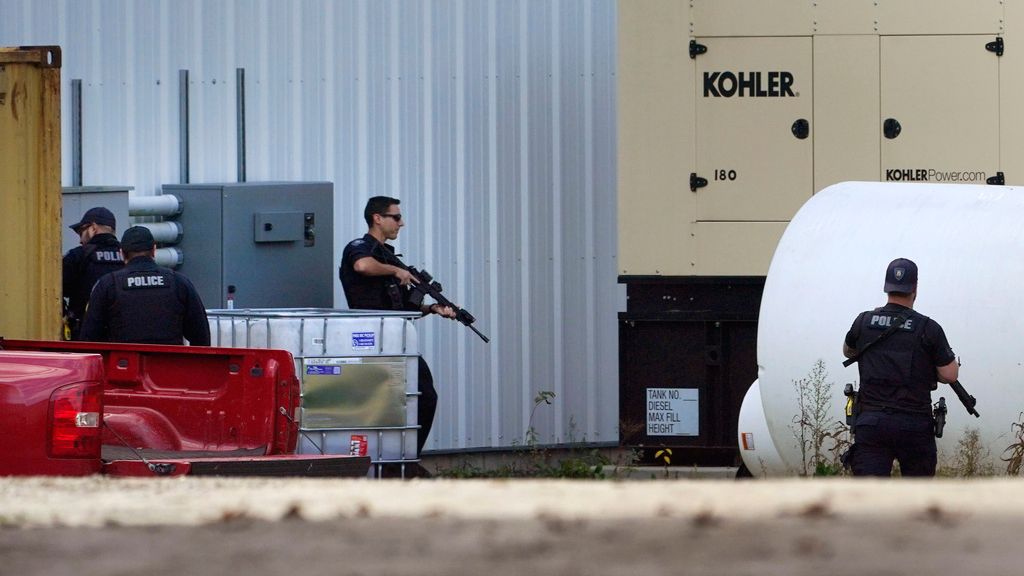A new report from the Department of Homeland Security includes chilling speculation that Lewiston shooter Robert Card may have been preparing some sort of “ambush” at the recycling center where his body was found. The report does not, however, indicate concrete evidence Card was planning anything specific following the shootings.
In events beginning just before 7 p.m. on Oct. 25, 2023, Card, 40, of Bowdoin, used a rifle to kill 18 people and wound 13 more at Just-In-Time-Recreation and Schemengee’s Bar and Grille in the worst mass shooting in Maine’s history.
He then went on the run, leaving his white Subaru Outback at a boat launch in neighboring Lisbon.
Police spent two days combing the area for him before finding him dead of a self-inflicted gunshot wound inside a trailer at Maine Recycling Corp. on Capital Avenue on Oct. 27, 2023, roughly a mile from the boat launch.
The Homeland Security report, dated Dec. 13, 2023, details efforts by federal agents to investigate Card’s movements after the shootings to trace the exact route he had traveled. The agents’ work included examining the recycling center, where Card had worked prior to the shootings.
According to the report, Homeland Security agents looked for video footage at the recycling center, citing comments to agents from a person whose name has been redacted.
According to the report, there were no cameras in the overflow lot where Card’s body was eventually found. It is a trailer parking lot across the street from the main recycling center. The unnamed person told agents that “Card would have known that there were no surveillance cameras in the overflow lot where Card’s body was discovered.”
Card’s body was found with two weapons inside one of the trailers. According to the report, someone whose name is redacted told agents, “he believes Card specifically chose the tractor trailer where his body was found to set up an ambush.”
Other details are also redacted, but the report noted the company’s employees also parked in the lot, “and the trailer containing Card’s body would only have been 15 feet from the employees parking their vehicles.”
The report does not indicate exactly who was speculating about a possible ambush, nor does it indicate specifically whom Card might have been planning to ambush, be it police or company employees.
OTHER DETAILS
Much of the remainder of the report is made up of agents’ attempts to find video surveillance footage that might have shown Card’s car on the street following the shootings.
Most of those attempts failed to find anything useful, aside from a single video clip from River Road Agricultural, a business on River Road roughly three-quarters of a mile from Schemengee’s.
“A review of the footage resulted in a potential sighting of the suspect vehicle passing south on River Road at approximately 1912 hrs,” or 7:12 p.m., the report noted. Lincoln Street, which passes in front of Schemengee’s, becomes River Road just south of the bar.
According to the report issued by the independent committee investigating the shootings, Card left Schemengee’s, the second site of the shootings, at around 7:09 p.m., and the first officers arrived there at about 7:13 p.m.
Other evidence may have caught part of the shootings on audio. Federal agents reported finding video from a surveillance camera located above the garage of a duplex.
The report redacted the address of the residence, but indicated agents found the duplex while canvassing “from the second shooting location, Schmengee’s Bar, in the direction of the boat launch where the suspect’s vehicle was found.”
The footage from the duplex’s camera has time stamps that are approximately the same time as the shootings, with the first clip beginning around 6:57 p.m.
“In the audio of the video approximately six gunshots are heard,” agents wrote. “In a second video from the same day, at 1858, three gunshots are heard. In a third video, time stamped 19:01, four shots are heard.”
The report has no other indications of Card or his actions being captured on video.



